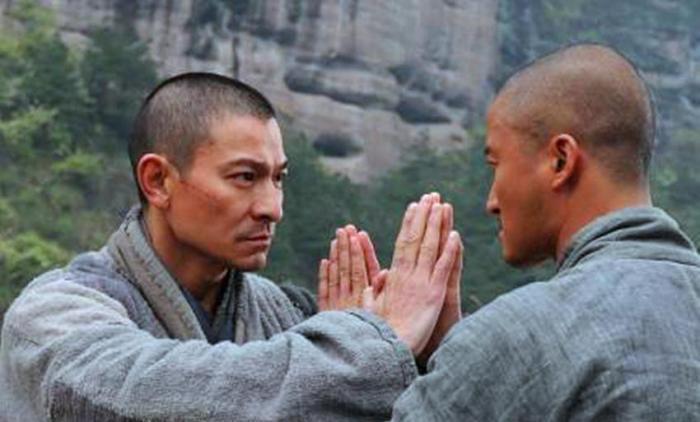One of the purposes of the CCP during the War of Resistance Against Japanese Aggression was to unite all forces that could be united to resist Japan, including bandit armed forces and even some puppet armies with conscience. Many anti-Japanese armed forces led by the CPC once did united front work in the local area, incorporating local bandits and township brave regiments. Even in that year, General Pi Dingjun personally went to the Shaolin Temple and asked the Shaolin Temple's Wu Monks to join the anti-Japanese armed forces, but the Wu Monks were very shy about this, and they were always unwilling to join the anti-Japanese contingent, only willing to be left alone.

The earliest trace of the Shaolin Temple's warrior monks in history dates back to the Tang Dynasty, the story of the popular "thirteen stick monks saving the Tang King". After that, the warrior monks of the Shaolin Temple appeared in the history books many times. In the end, the warrior monks of the Shaolin Temple once developed to the size of a thousand people and became a huge force.
When Shaolin moved south to Southern China, it once fought against the invasion of Wukou during the Ming Dynasty, and its strong combat effectiveness impressed Wukou. This also made the Shaolin Temple once again famous, and the incense was constantly burning. After that, there were endless stories around the Shaolin Temple, and there were even rumors that the Yongzheng Emperor was a lay disciple of the Shaolin Temple, of course, the authenticity needed to be verified.
After the abdication of Emperor Xuantong, China was in chaos, with warlords everywhere armed and fighting for profit. During this turbulent period, the Shaolin Temple once built an armed force to protect itself. The original intention of this armed force was to protect the Shaolin Temple and the surrounding areas, eliminate bandits, and protect the peace of the party.
But then this armed force was involved in a struggle between the warlords, who openly sided with the warlords and participated in the battle against the other. This made the blocked warlord Shi Yousan very angry, after occupying the area around the Shaolin Temple, in order to retaliate against the Shaolin Temple, led the troops up the Song Mountain, smashed and burned, a fire burned the ancient temple, the Daxiong Treasure Hall, the Tibetan Scripture Pavilion and other ancient buildings were burned out, and the legend said that the fire burned for three days and three nights, and the flames soared into the sky.
Here I want to correct a misunderstanding for everyone, the Shaolin Temple's temple martial monks are not the monks who are dressed in robes and holding long sticks as many people think, but the army with long guns, wearing military uniforms, wearing military hats, and carrying armor, if you don't look closely, you will definitely think that this is a warlord armed force.
During the War of Resistance Against Japanese Aggression, General Pi Dingjun, a famous general of the Communist Party of China, once went to the Shaolin Temple for united front work and wanted to recruit the hundred armed forces of the Shaolin Temple to contribute to the War of Resistance. Although the abbot of the Shaolin Temple received General Pi Dingjun well, he was very wary of him and let the warrior monks take guns and guard outside.
General Pi Dingjun was very angry, thinking that he had come for the anti-Japanese national united front, why did he put up the same as the Hongmen Banquet? As soon as this remark came out, the abbot of the Shaolin Temple was also embarrassed. Of course, this united front matter was also gone, it was never mentioned again, and the Shaolin Temple was only left alone during the War of Resistance.
On the other hand, at the time of the War of Resistance Against Japanese Aggression, although no martial monks were sent down the mountain to join the Eighth Route Army, they always donated money and materials to support the War of Resistance, which was respected by the Eighth Route Army and the Nationalist Army, and also won the respect of the Chinese people. And the Shaolin Temple is not willing to get involved in the war, I am afraid that the tragedy of Shi Yousan will repeat itself again!
The War of Resistance Against Japan was a war concerning the survival of a nation, and every Chinese should do its best, but it was also based solely on the will of individuals. Those who are willing to support the War of Resistance, whether they are overseas Chinese, whether they are foreign friends, whether they are bandits and hooligans, whether they are puppet troops or township brave regiments, as long as they are willing to contribute to the War of Resistance, they all have a merit and deserve our memory! Cherish peace and don't forget the shame of the country!